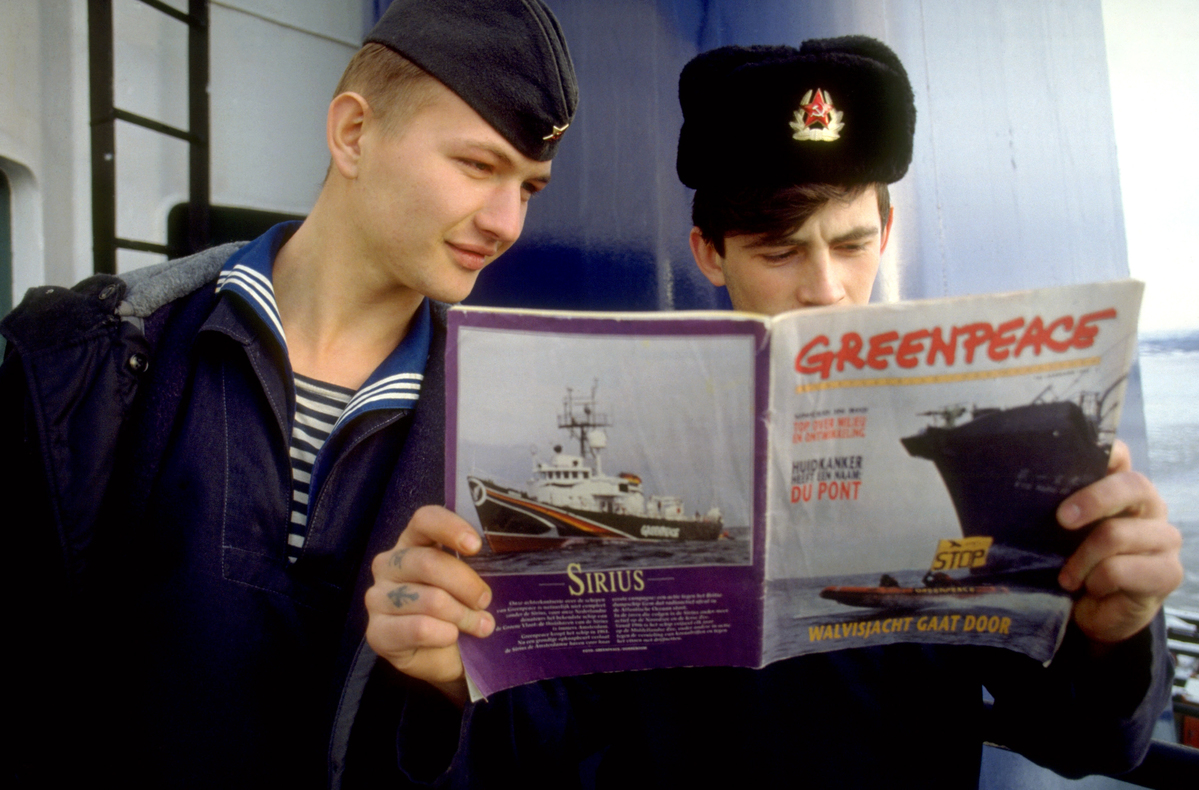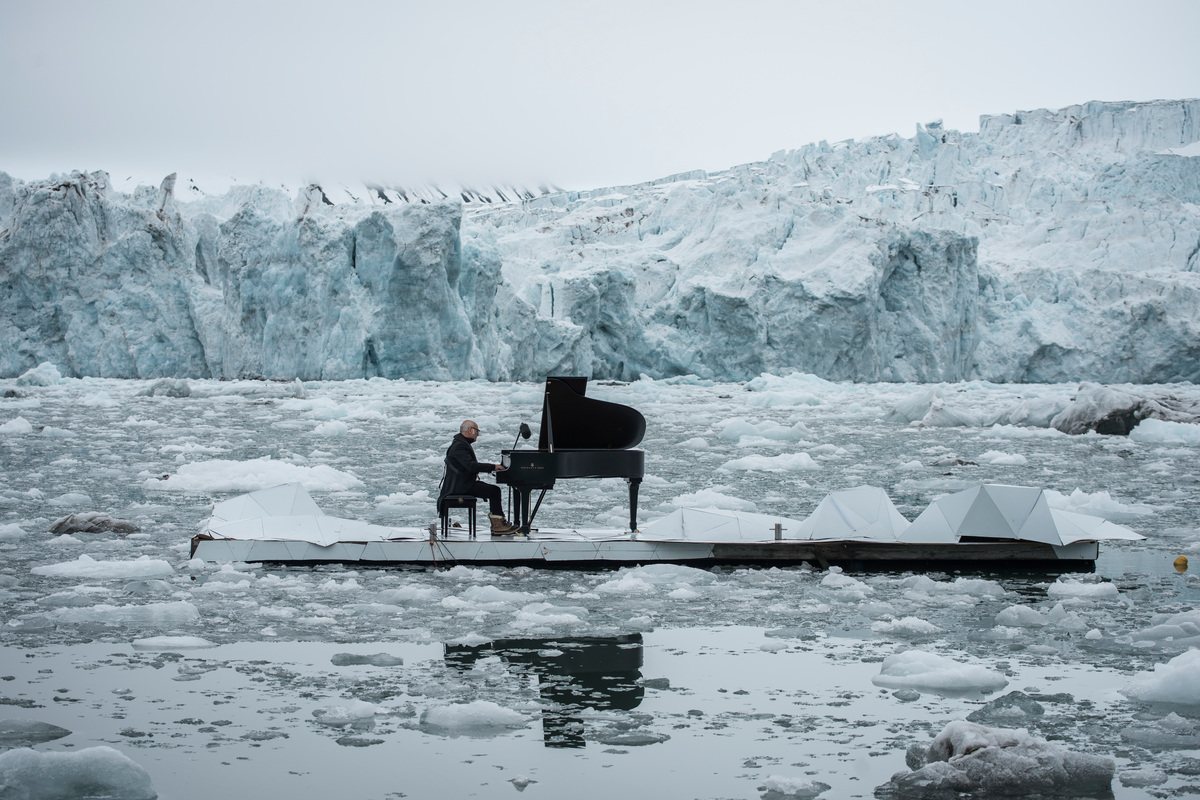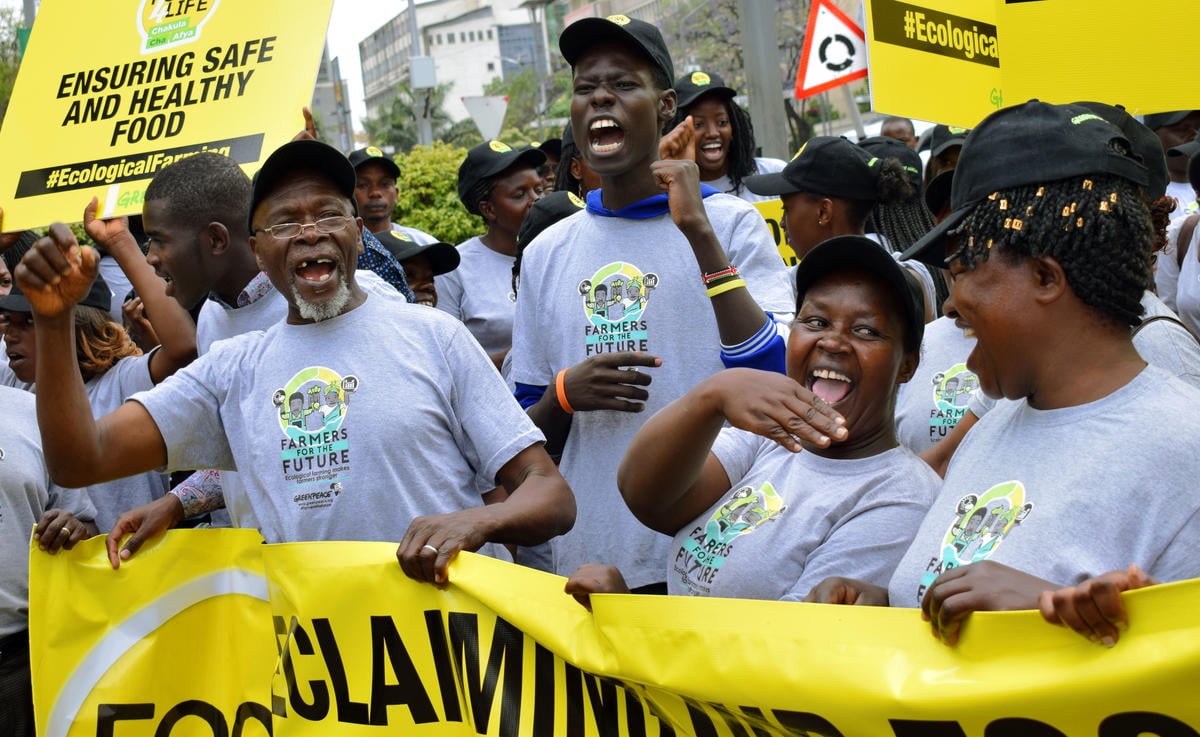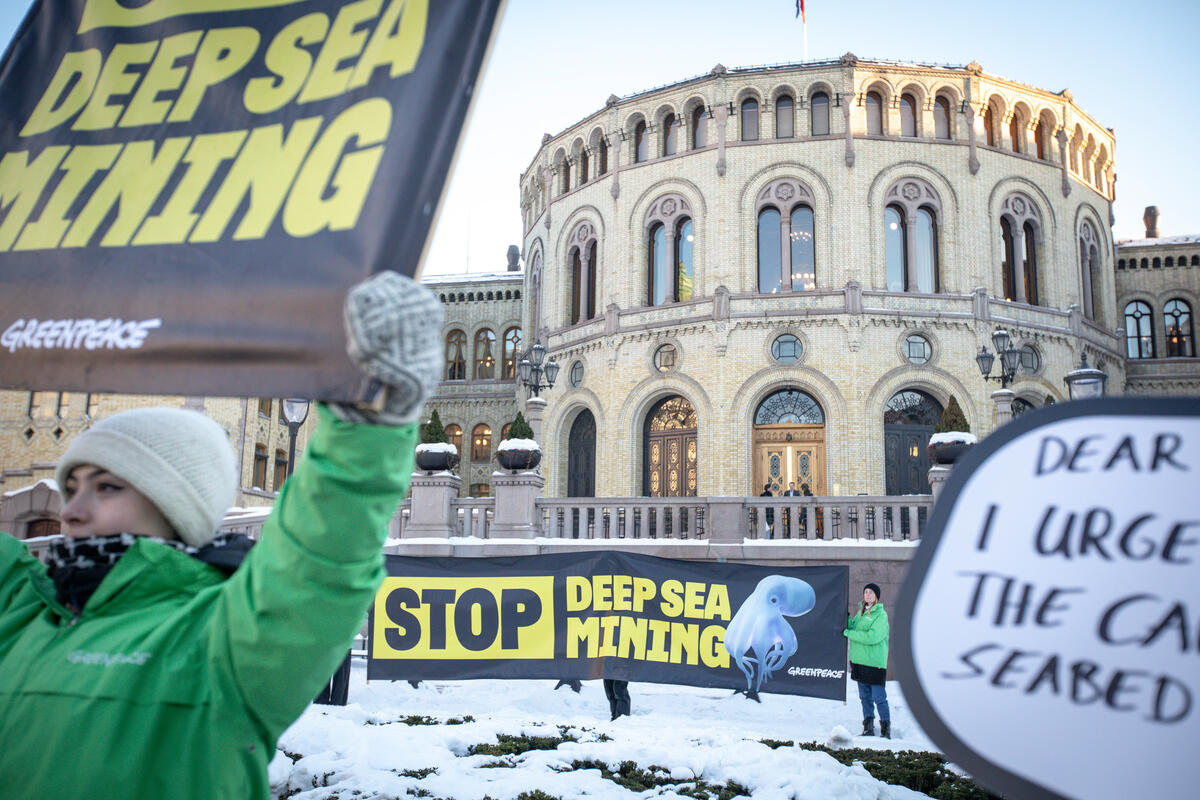Those who set out to “change the world,” may discover that common sense is not always common, that status quo institutions resist change even as they pay lip service to new ideas, and that even social change institutions can stumble over old habits of hierarchy, money, or power. How does real, enduring change actually occur in a complex social and biological environment?

Russian sailors reading Greenpeace literature on SOLO, Kara Sea.
In 2017, as a core text for incoming students, the Harvard Innovation Lab selected a book that asks exactly this question: Small Arcs of Larger Circles: Framing through Other Patterns, by Nora Bateson. The book offers a refreshing, promising discussion of social change strategy.
Bateson resists the temptation to leap to “solutions,” or devise a road-map for change. There is no list of ten easy things you can do. Rather, Bateson sets out to rethink how we think. The book seeks a language that more authentically reflects the ecologies – mental, social, and biological – that we are attempting to change.
Interspersed among essays about how change occurs in the world, the book offers poetic reflections, personal accounts of childhood, parenting encounters, and “unauthorized knowings” that move from the personal to the social, and to ecological points of view. “It might be that we are navigating with the wrong map,” Bateson suggests. “There is no language to define the spiraling processes of the vast context we are participants in. We do not have names for the patterns of interdependency.”
Rethinking “systems“
In this book, Bateson sets out to discover a language that discards the linear, mechanistic ways of thinking that have led to societies that condone injustice and ravage Earth’s ecosystems. She rejects common deterministic explanations for a language that reflects living systems and brings “both rigor and imagination into the inquiry.”
Bateson believes the typical explanations of “systems theory” still employ the language of mechanistic science, treating a “system” as a “sum of parts” that have “functions” like the circuits or gears of a machine.
However, in a living ecosystem, in a forest or in the ocean, the “parts” are alive, interconnected, co-evolving, and mutually learning new ways to interact in changing contexts. In an ecosystem, interaction is not “hard wired” but is dynamic and contextual.
We know now, for example, that even at a cellular level genes do not necessarily determine outcomes, but rather express various tendencies in response to environmental conditions. A 2014 study by Erez Braun at the Network Biology Research Laboratories, in Israel, found that this flexibility of response allows cells to engage in “exploratory adaptation,” learning new ways to respond that may have survival value under changing ecological contexts.
Furthermore, this learning is “mutual.” The “parts” of an ecosystem may have boundaries (skin, a cell membrane, walls of an ant colony) but these “boundaries” remain permeable. In fact, Bateson points out, these borders, or “liminal zones,” provide the regions of interaction and learning. Information persistently flows across these regions as organisms mutually learn how to cooperate, how to interact, how to survive and thrive.
Vita, not “parts“
A human society is also a living system, with living participants, learning from each other, struggling, cooperating, clashing, and influencing each other. “The notion of an identity that is truly independent is impossible,” Bateson writes. “None of us can be separated from language, culture, interaction with nature, food, air, social relationships, etc…”
Understanding living systems, suggests Bateson, begs for a new language that transcends even our ideas about a “circle” or “web of life.” We are not beads on a string or nodes in a net. We are fully integrated, constantly changing, forever learning, living entities with permeable boundaries. This does not mean that we are not responsible for our actions; rather, “it means our responsibility extends to larger contexts than our own skin,” beyond even our family, friends, nation, or our own species.
“Why don’t we have a word,” Bateson asks in Small Arcs, “for those bodies, families, forests, and other buzzing hives of communication – and for the mutual learning that takes place within those living contexts?” Rather than referring to these “buzzing hives” as “parts” of a system, Bateson suggests another word: vitae (singular, vita). Any aspect of a larger living entity – the plants and animals in a forest or the organs in a body – that, “through interfaces of learning” form the larger entity. We are vitae with infinite possibilities of interaction, not parts with functions.For larger living systems, comprised of those interacting vitae, she proposes the word “symmathesy,” from the Greek sym (together) and mathesi (to learn). A forest or a human society is not hard-wired. These are living processes, in which the participants are mutually learning.
Warm Data Labs
This search for language is not a purely intellectual exercise for Bateson. Her larger goal is to apply mutual learning in living systems to effective responses to economic injustice, gender inequality, ecological destruction, and other challenges facing our modern world.

En route to French nuclear test site Moruroa the RAINBOW WARRIOR II visited Rarotonga in the Cook Islands and Tahiti and joined in massive local demonstrations against France’s President Chirac’s decision to resume testing at Moruroa. Deputy PM of Cook Islands greet crew.
To this end, Bateson convenes diverse groups of citizens from around the world, and works on specific issues – such as carbon emissions, education, healthcare – with what she calls “Warm Data Labs.” Warm data, Bateson explains, is information about relationships. Traditional data, numbers, tend to get decontextualized and manipulated to argue one bias against another. The warm data exercise avoids binary positions, such as right-left politics, or science versus mysticism.
A typical warm data session will address a concern, such as “carbon emissions,” from all conceivable contexts. Some participants approach the subject from the perspective of atmospheric “science.” Others may choose economics, social justice, law, health, education, and so forth.
There are no “experts,” delivering lectures, and no audience. Everyone participates, selects a contextual group, and the discourse begins. Participants may leave their group and join another at any time. Participants may take notes, and in some cases, the notes are left with the group, so there is a running log of the “economics” discussion, and another log of the “science” group. Meanwhile, participants move among these “mutual learning contexts.”
The labs may continue for a day, or several days. To conclude, individuals report from personal or collective notes. The emerging ideas or data are, as Bateson says, “trans-contextual” not absolute, but a reflection of various contexts, each one influenced by other contexts.
Liminal zones
The Warm Data Lab is an experiment to discover how mutual learning takes place in living systems. The exercise reveals how communication occurs and information emerges at the boundaries between living parts of a system, and how multiple descriptions honor the system’s integrity.
The result is typically not a linear, engineered “solution” to a “problem,” but rather an insight into the appropriate responses to a polylemma, a multifaceted challenge. “Uncertainty is healthy,” says Bateson. Symbiosis in a system is not just parts working together, but living vitae learning together.
Can we apply these insights to shifting society away from destructive habits?
The exercise reveals how systemic responses to one challenge may lend insight into other challenges. For example, several years ago, I attended a session with Nora Bateson and colleagues at the Centro Studi neurological rehabilitation clinic in Schio, Italy, recounted here in “How do systems get unstuck?” We were interested in whether whole-system physical rehabilitation methods could help us address the ecological stasis apparent in our society.
Changing habits is difficult, whether for an individual or a society. Destructive habits are learned responses, typically to some sort of stress, and a transformation to healthier habits is always relational. The change takes place in the liminal zone, the space between the living participants in a living system.
Physical change, for example – even at a celestial, ecosystem, cellular, atomic, or social level – may involve resonance; the response of one physical part of a system to oscillations or vibrations in another part. However, resonance is not a “thing” that exists in space; resonance implies a relationship.

Acclaimed Italian composer and pianist Ludovico Einaudi performs one of his own compositions on a floating platform in the Arctic Ocean, in front of the Wahlenbergbreen glacier (in Svalbard, Norway).
This is where imagination becomes as important as rigorous science or politics. The creative arts serve as a metaphor for social change because art is not about an explanation, but about play, feeling, and relationships. “Art is relationship,” Bateson observes. Art is where we learn about grace, contradiction, and about the integration of apparent opposites. Art is about pattern.
When a society or an ecosystem change, what changes is not the “parts” but the patterns among the living participants. Understanding ecology is not like understanding how a clock or an algorithm work. Ecology takes us into the realms of shifting patterns, living communication, symbiosis, and mutual learning.
It is no surprise that the Harvard Innovation Lab selected Small Arcs of Larger Circles to help frame social change for their students. Gaia knows, we need a fresh approach.
==============
References and Links
Small Arcs of Larger Circles: Framing through Other Patterns, by Nora Bateson (Triarchy Press, 2016)
Harvard Innovation Lab: harvard.edu
The International Bateson Institute and Warm Data: IBI
Genetic “exploratory adaption” in cells: (1) S. Alvarado, M. Szyf, et. al.; “Epigenetic variation in the Egfr gene generates quantitative variation in a complex trait in ants,” Nature Communications 6, March 11, 2015. (2) S. W. Cole, “Social Regulation of Human Gene Expression,”Am J Public Health, 103:S84–S92, 2013. (3) Erez Braun, “The unforeseen challenge: from genotype-to-phenotype in cell populations,” Rep. Prog. Phys. 78.




